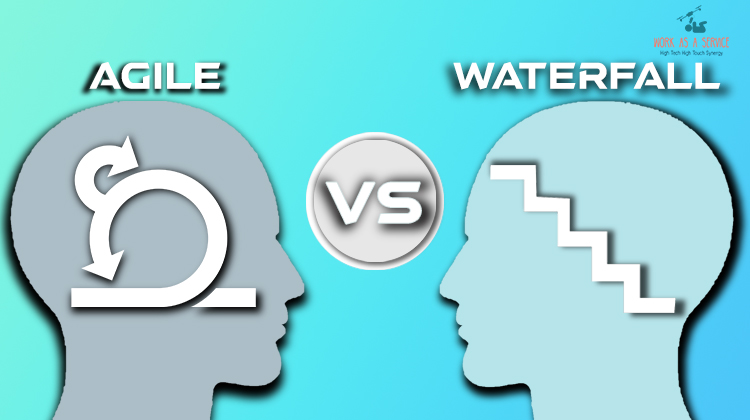
Agile vs Waterfall:
Why Agile Is Better for Software Development Projects
Agile and waterfall are two widely used project management frameworks.
Agile has become increasingly popular in recent years and is now the preferred method for many organizations when it comes to project management. This is because agile is better than waterfall in many ways.
Agile is better able to adapt to changing circumstances, and provides more flexibility, faster results, and increased customer satisfaction.
Agile also allows for quicker feedback, encourages collaboration and communication, and is better suited for projects that are constantly evolving.
With agile, teams can quickly respond to customer needs and can make changes quickly and efficiently.
All of these advantages make agile an attractive option for many organizations.
Comparison of Agile and Waterfall
There are many similarities between agile and waterfall.
Both are project management frameworks, and each method consists of five phases.
Both methods also involve a large team and are geared toward large, enterprise-level projects. But there are also many differences between agile and waterfall.
Waterfall projects use a top-down approach, where requirements are specified at the beginning of the project, and then are passed down the chain until they are implemented.
In a waterfall, each phase has a specific duration, and work is not expected to be revisited once it has been completed. This differs from agile, where work is expected to be done iteratively, and is then validated through testing throughout the project.
Another major difference is that waterfall is a sequential process, whereas agile is a collaborative process.
Advantages of Agile over Waterfall
Advantages of agile over waterfall include faster results, increased customer satisfaction, quicker feedback, encouragement of collaboration and communication, and better suitability for projects that are constantly evolving.
Agile projects begin with a “sprint,” or a fixed period, in which work is completed. This allows teams to have a clear endpoint and deadline and allows for flexibility if the project requires changes due to
circumstances outside of the team's control.
With agile, customers are involved in the project at all times and can provide their thoughts and feedback on the project at any time. This allows customers to feel more satisfied with the project and gives them a better idea of when the project will be completed.
Faster Results
Agile is better than waterfall for producing faster results, as it encourages regular check-ins and feedback. This helps teams to be more efficient in their work and to identify problem areas.
In waterfall, feedback is only obtained at the end of the project, making it more time-consuming to identify problem areas and make changes. Because agile encourages collaboration, communication, and feedback from the beginning of the project, results are produced faster.
Increased Customer Satisfaction
Customer satisfaction is higher for projects that use agile. This is because customers are involved in the project at all times, and can provide their feedback at any time. Sometimes, customers are not aware of what they want until they see it, which is why customer feedback is so important.
This is not the case with waterfall; customers are not involved until the end of the project, which could leave them dissatisfied with the results.
Quicker Feedback
With agile, feedback is given throughout the project, which allows teams to correct any issues that may arise.
This is different from the waterfall, where feedback is given at the end of the project after the work has been completed. This leaves teams with less time to correct any issues they may encounter, which could lead to subpar results.
Encourages Collaboration and Communication
Both agile and waterfall encourage collaboration and communication, but with agile, these are more essential to the process.
Communication and collaboration are important because they help teams identify problems and solve them efficiently.
This is important for all projects, but it is especially crucial for large projects that require many people to be involved.
Better Suited for Projects that are Constantly Evolving
Agile is better for projects that are constantly evolving, as changes can be made quickly and efficiently. This is especially helpful for projects that rely on new technology, where the technology may change
frequently.
In a waterfall, changes are made less frequently and are costly due to the amount of time it takes to complete a project.
Conclusion
Waterfall and agile are two widely used project management frameworks. Agile has become increasingly popular in recent years and is now the preferred method for many organizations when it comes to project management. This is because agile is better than waterfall in many ways.
Agile is better able to adapt to changing circumstances, and provides more flexibility, faster results, and increased customer satisfaction. Agile also allows for quicker feedback, encourages collaboration and communication, and is better suited for projects that are constantly evolving.
With agile, teams can respond to customer needs and can make changes quickly and efficiently. All of these advantages make agile an attractive option for many organizations.